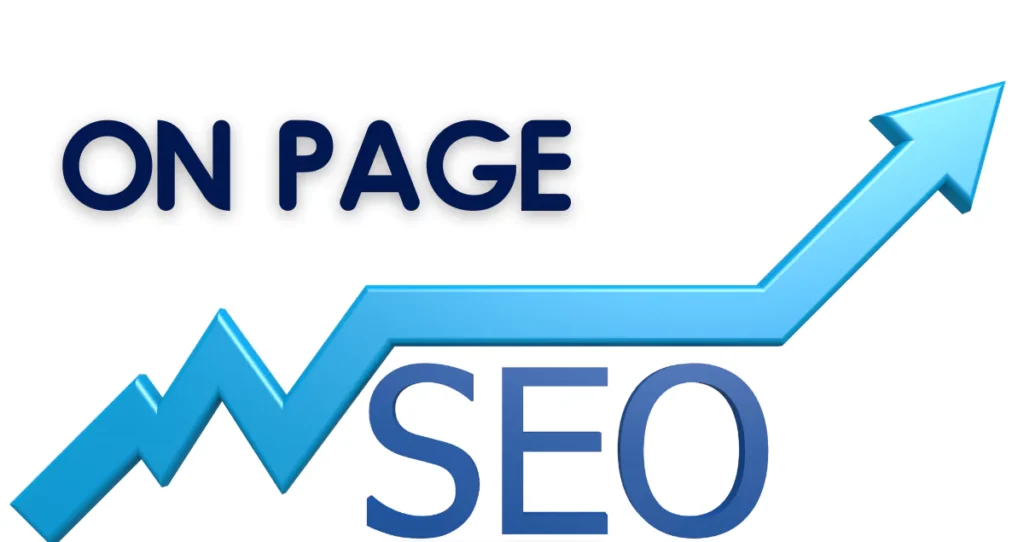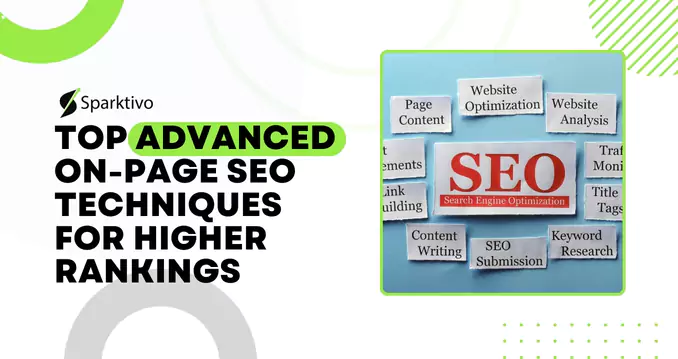Top Advanced On-Page SEO Techniques for Higher Rankings
Everyone wants their website to show up first on Google. But with more competition every day, basic SEO isn’t enough. To stay ahead, you need to go beyond titles and meta tags. You need to apply advanced on page SEO techniques that help you rank higher and deliver a better experience to your visitors.
This guide will walk you through these powerful methods—step by step. Whether you manage your site yourself or work with experts, these techniques will make your pages stronger, faster, and more visible.
If you need help putting these steps into action, Sparktivo is here to help you win the SEO game with smart strategies that work.
What Is On-Page SEO and Why It Matters

On-page SEO is everything you can control directly on your website to improve your rankings. This includes your content, code, layout, and page speed. It’s what search engines read to decide if your page should rank above your competitors.
Basic on-page SEO means using proper headings, adding meta descriptions, and including keywords. But if you want to rank in competitive niches or target high-intent search traffic, you need to go deeper.
That’s where advanced on page SEO techniques come in. They help search engines better understand your page while improving the user experience. When done right, these techniques boost your visibility, increase time on site, and reduce bounce rates.
Why Basic Optimization Isn’t Enough Anymore

Search engines like Google have become smarter. They don’t just match keywords anymore—they measure context, quality, and user behavior. In other words, they want the best answer, not just the most optimized one.
This means having a fast-loading website, relevant content, strong internal linking, and semantic structure. Search engines now use natural language processing (NLP) to understand meaning beyond keywords. They also reward pages that meet real user needs, not just those with clean HTML.
Basic SEO might get you on the map. But advanced on page SEO techniques help you stay there—and outrank competitors. They create content that not only gets found but keeps users engaged. That’s what modern SEO is about.
Advanced On-Page SEO Techniques That Work

Let’s dive into the real strategies that improve your pages from both technical and user-focused angles.
Optimizing for Search Intent
Search intent is the reason behind every search. Is someone looking to buy, learn, compare, or solve a problem? Your content must match this intent.
If someone searches “best project management software,” they expect a list or review—not a sales pitch. If your page delivers something else, they’ll leave. That hurts your rankings.
Advanced intent optimization means matching not only the keyword but also the format. You structure your page in a way that makes sense for the intent—using comparisons, pros and cons, or answer boxes.
It also means writing clear, useful answers that can appear in featured snippets. These are the answer boxes at the top of many search results. Writing precise summaries and structured content increases your chances to rank there.
Using Semantic SEO and Topic Clustering
Search engines don’t just look at one keyword anymore. They evaluate overall topic relevance.
Semantic SEO means using related terms naturally in your content. For example, if your keyword is “email marketing tools,” you should also include terms like automation, deliverability, campaigns, and open rates.
Topic clustering takes this further. It means creating a set of related pages and linking them together. You write one main “pillar” page and several related “cluster” pages. This helps Google understand the depth of your content and gives users a full learning experience.
Internal links between these pages strengthen your site structure and make it easier for both users and search engines to navigate.
Implementing Schema Markup and Structured Data
Schema markup is code that helps search engines understand what your content means. It doesn’t change what users see, but it makes a big difference in SEO.
With structured data, you can tell Google that your page is a product, an article, an FAQ, or a review. This increases your chances of rich snippets, which show ratings, prices, or even images directly in search results.
Advanced on-page SEO uses JSON-LD format for schema. You can add it using tools like Schema.org or plugins if you’re on platforms like WordPress.
This small piece of code helps improve your click-through rate and makes your pages stand out in search.
Enhancing Content Depth and Visual Hierarchy
Long content isn’t better unless it’s useful. Advanced SEO means giving your content depth—without overwhelming readers.
This includes answering common questions, breaking sections with subheadings, and using summaries or takeaways. Strong structure keeps readers engaged and helps search engines index your content better.
Visual hierarchy means making the most important things stand out. Use headings, bold text, and callouts to guide readers through your page.
User-friendly content leads to more time on site, better engagement, and lower bounce rates. These are ranking factors Google considers when deciding where to place your content.
Improving Internal Link Strategy and Anchor Text Use
Internal links connect your content and distribute SEO power across your site. But it’s not just about adding links—it’s about adding the right ones.
Each link should guide the reader to something valuable and relevant. Use descriptive anchor text that reflects what the linked page is about. Avoid vague terms like “click here.”
An advanced internal linking system builds a logical path for both users and search engines. It also keeps visitors on your site longer, which improves user signals.
Linking from new content to older high-performing pages—and vice versa—can refresh rankings and pass SEO value.
Optimizing for Core Web Vitals
Google’s Core Web Vitals are a set of metrics that measure user experience. They include:
- Largest Contentful Paint (LCP): Measures loading speed
- First Input Delay (FID): Measures interactivity speed
- Cumulative Layout Shift (CLS): Measures visual stability
Improving these makes your site faster and more responsive. Use tools like Google PageSpeed Insights or Lighthouse to see your scores. You may need to compress images, reduce JavaScript, or switch to a faster hosting service.
Google now uses these metrics as ranking factors, especially on mobile. Fast, stable pages lead to higher rankings and better engagement.
How Sparktivo Applies These Techniques to Client Websites

At Sparktivo, we don’t just follow SEO trends—we implement advanced systems built for real results. One of our clients, a SaaS company, struggled with organic visibility. They had decent content, but it wasn’t ranking.
We started by auditing their site structure. We found missing internal links, unclear content structure, and no schema markup. We redesigned their content around topic clusters, optimized each page for search intent, and added structured data.
We also improved page speed and mobile experience. Within four months, the client’s organic traffic grew by 130%, and several pages began ranking in the top three positions.
This is the power of real advanced on page SEO techniques. It’s not just about traffic—it’s about building a foundation for lasting growth.
Mistakes to Avoid When Using Advanced On-Page SEO

Even advanced strategies can fail if used incorrectly. One common mistake is over-optimization. Adding too many keywords or using schema in the wrong places can confuse search engines and hurt your rankings.
Another issue is ignoring search intent. If your content doesn’t match what the user expects, they’ll bounce fast—and Google will notice.
Some websites focus too much on technical tweaks and forget about content quality. But no amount of optimization can fix weak or shallow content.
Before applying advanced tactics, make sure your foundation is solid. Start with good writing, helpful insights, and real value. Then optimize.
If you’re unsure where to begin, Sparktivo can audit your current setup and create a custom action plan.
Conclusion
In today’s search landscape, the basics are no longer enough. You need depth, structure, and strategy. These advanced on page SEO techniques are the key to standing out in a crowded space.
They help search engines understand your site, improve your rankings, and give your users a better experience. From schema markup to content clusters and Core Web Vitals, each part plays a role.
You don’t have to do it all alone. Sparktivo offers expert support to help you build SEO systems that scale. With us, SEO isn’t guesswork—it’s growth.
Ready to upgrade your SEO? Contact Sparktivo today and let’s take your rankings to the next level.

